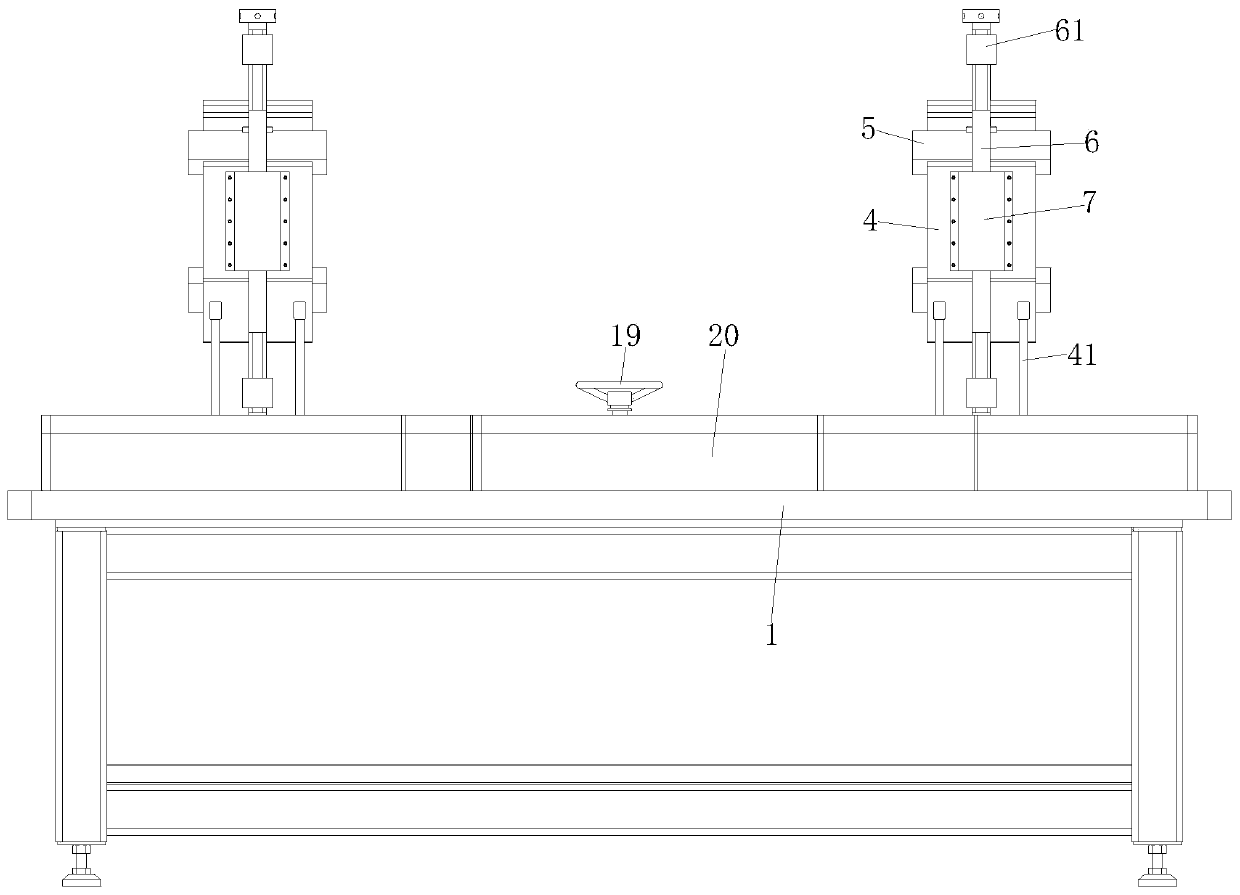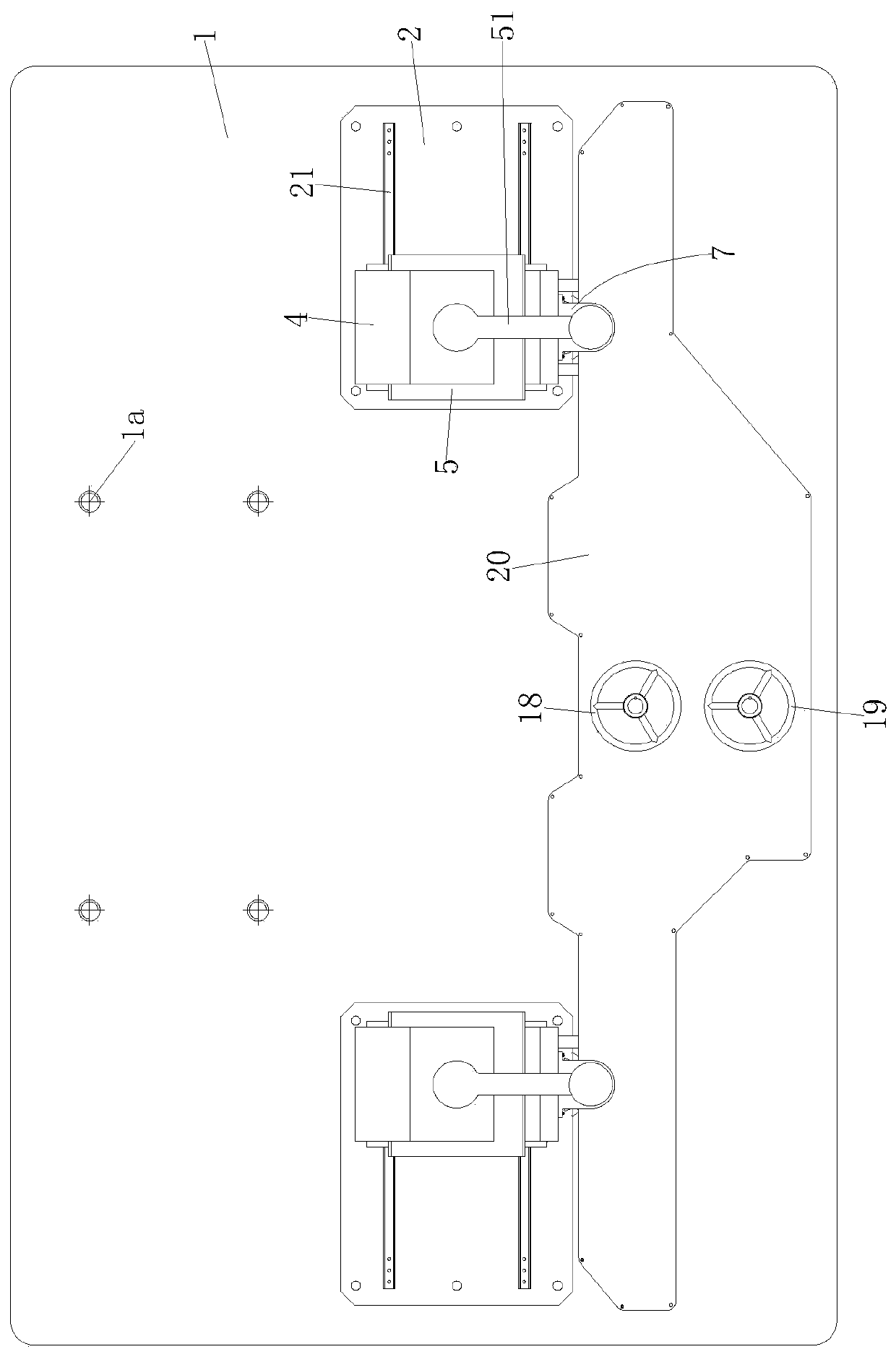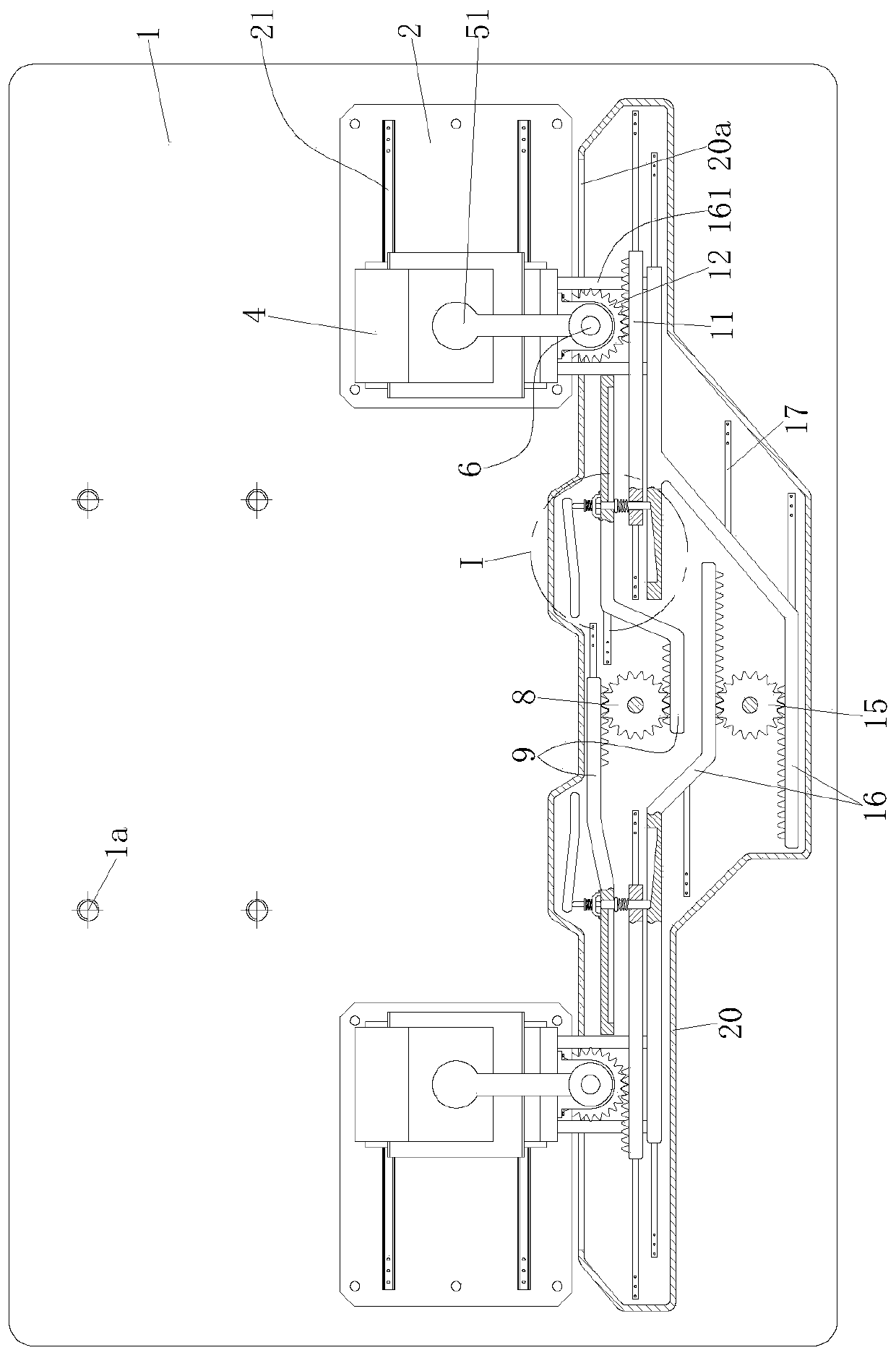66kV in-field submarine cable processing auxiliary cutting equipment for offshore wind power generation
A 66kv, submarine cable technology, used in the field of auxiliary cutting equipment for 66kV in-field submarine cable processing for offshore wind power generation, can solve the problems of unstable force at the cutting point, poor cutting effect, and poor neatness of the cutting surface. The effect of cutting quality, easy maintenance and low equipment cost
- Summary
- Abstract
- Description
- Claims
- Application Information
AI Technical Summary
Problems solved by technology
Method used
Image
Examples
Embodiment Construction
[0024] In order to make the technical means, creative features, goals and effects achieved by the present invention easy to understand, the present invention will be further elaborated below in conjunction with the accompanying drawings and embodiments.
[0025] Such as Figure 1 to Figure 5 As shown, the auxiliary cutting equipment for 66kV in-field submarine cable processing for offshore wind power generation includes a frame body 1, a platform is provided on the upper end of the frame body 1, and two Each mounting plate 2 is fixedly installed on the platform by screws, and each mounting plate 2 is slidably equipped with a clamping mechanism, and the two clamping mechanisms are also on the same center line.
[0026] Such as figure 1 , figure 2 and image 3 As shown, the front side of the platform of the frame body 1 is provided with a protective casing 20, and the rear side of the platform of the frame body 1 is provided with four threaded mounting holes 1a for fixing th...
PUM
 Login to View More
Login to View More Abstract
Description
Claims
Application Information
 Login to View More
Login to View More - R&D
- Intellectual Property
- Life Sciences
- Materials
- Tech Scout
- Unparalleled Data Quality
- Higher Quality Content
- 60% Fewer Hallucinations
Browse by: Latest US Patents, China's latest patents, Technical Efficacy Thesaurus, Application Domain, Technology Topic, Popular Technical Reports.
© 2025 PatSnap. All rights reserved.Legal|Privacy policy|Modern Slavery Act Transparency Statement|Sitemap|About US| Contact US: help@patsnap.com



